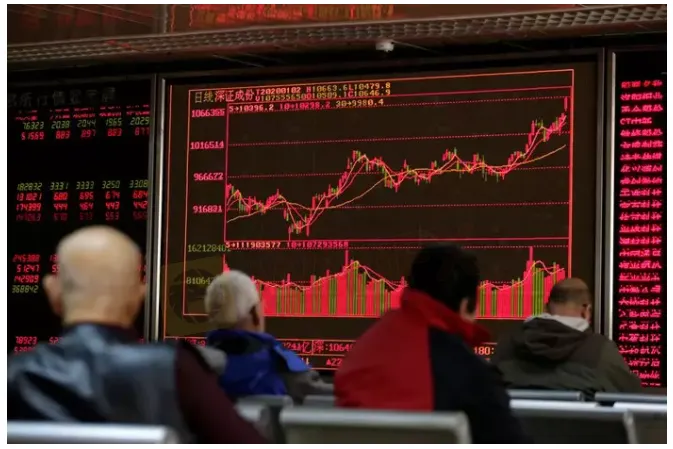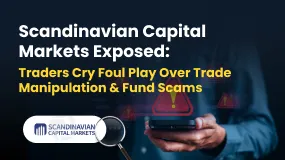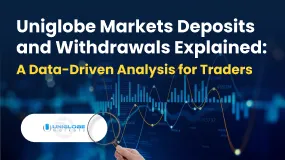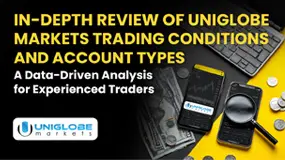简体中文
繁體中文
English
Pусский
日本語
ภาษาไทย
Tiếng Việt
Bahasa Indonesia
Español
हिन्दी
Filippiiniläinen
Français
Deutsch
Português
Türkçe
한국어
العربية
Oil leads mad rush to resources, stagflation a risk
Abstract:Asian shares crept higher on Thursday after reassuring comments from the Federal Reserve helped Wall Street rally, though the war in Ukraine sent oil and resource prices spiralling ever higher in a grim omen for global inflation.

Oil prices sped higher on Thursday as the war in Ukraine drove a mad dash for resources in an ominous sign for global inflation, while Asian shares eked out gains after reassuring comments from the Federal Reserve helped Wall Street bounce.
Brent crude topped $117 per barrel and is now up almost 20% on the week, while everything from coal to natural gas and aluminium are on fire as Western nations tighten sanctions on Russia.
“Russia supplies around 30% of Europes gas and oil imports and accounts for around 11% of world oil production,” said Shane Oliver, head of investment strategy at fund manager AMP. “In short, investors are worried about a stagflationary shock.”
The rush to commodities lifted resource-rich Australian stocks 0.9%, while Indonesia was just off a record high.
Japan‘s Nikkei managed a 0.8% gain, while MSCI’s broadest index of Asia-Pacific shares outside Japan nudged up 0.6%.
MSCI added to Russias financial isolation by deciding to exile the country from its emerging markets index, while FTSE Russell said Russia would be removed from all its indices.
Fitch slashed Russia‘s sovereign credit rating six notches to “junk” status, saying it was uncertain the country could service its debt, and Moody’s soon followed.
After bouncing overnight, S&P 500 stock futures were flat, while Nasdaq futures eased 0.1%.
EUROSTOXX 50 futures slipped 0.2%, and analysts at JPMorgan had a stark warning for clients.
“We believe investors should underweight the Euro area in both the currency and the equity space given its vulnerability to any further escalation,” they wrote in a note.
“We revised our commodity price forecasts 10-20% higher across the board given the unfolding geopolitical crisis,” they added. “One silver lining is that the crisis forced a dovish reassessment of the Fed by the market, and we continue to assume a ‘moderate’ hiking path.”
EURO UNDER PRESSURE
Fed Chair Jerome Powell on Wednesday said rates would likely be raised by only 25 basis points this month, and the war in Ukraine has made the outlook “highly uncertain”.
Futures reacted by pricing out any chance of a half-point hike later in March.
However, Powell did warn the Fed might have to hike more aggressively if inflation kept rising. That took some of the safe-haven steam out of Treasuries and 10-year yields were back at 1.85%, from Tuesdays two-month trough of 1.682%.
European bonds also surrendered some of their recent hefty gains after data showed euro zone inflation hit a record high of 5.8% in January, making it harder for the ECB to keep policy super loose.
Inflation was also on the mind of the Bank of Canada when it kicked of a tightening cycle on Wednesday with a quarter-point rate hike to 0.5%.
The move combined with the strength of oil prices to lift the Canadian dollar to a five-week high at $1.2625. Other commodity-linked currencies also benefited with the Australian dollar at a four-year peak on the euro.
The euro was likewise on the defensive at $1.1098, having carved out a 22-month trough overnight at $1.1056.
The dollar edged up to 115.68 yen as Japans trade position is set to worsen given it is a major importer of energy and resources.
Dealers stayed well away from the Russian rouble, though it did trade once at 101.00 per dollar. [FRX/]
The U.S. dollar index stood at 97.502, after reaching its highest since June 2020 at 97.834.
Gold was holding at $1,927 an ounce and still up 2% on the week so far thanks to safe-haven demand. [GOL/]
Oil flew further past $110 a barrel on talk the market will remain short of supply for months to come following sanctions on Moscow and a flood of divestment from Russian oil assets by major companies. [O/R]
Brent put on another $4.34 to reach $117.27 a barrel, while U.S. crude rose $3.32 to $113.92.

Disclaimer:
The views in this article only represent the author's personal views, and do not constitute investment advice on this platform. This platform does not guarantee the accuracy, completeness and timeliness of the information in the article, and will not be liable for any loss caused by the use of or reliance on the information in the article.
Read more

Scandinavian Capital Markets Exposed: Traders Cry Foul Play Over Trade Manipulation & Fund Scams
Does Scandinavian Capital Markets stipulate heavy margin requirements to keep you out of positions? Have you been deceived by their price manipulation tactic? Have you lost all your investments as the broker did not have risk management in place? Were you persuaded to bet on too risky and scam-ridden instruments by the broker officials? These are some burning issues traders face here. In this Scandinavian Capital Markets review guide, we have discussed these issues. Read on to explore them.

Uniglobe Markets Deposits and Withdrawals Explained: A Data-Driven Analysis for Traders
For any experienced trader, the integrity of a broker isn't just measured in pips and spreads; it's fundamentally defined by the reliability and transparency of its financial operations. The ability to deposit and, more importantly, withdraw capital seamlessly is the bedrock of trust between a trader and their brokerage. When this process is fraught with delays, ambiguity, or outright failure, it undermines the entire trading relationship. This in-depth analysis focuses on Uniglobe Markets, a broker that has been operational for 5-10 years and presents itself as a world-class trading partner. We will move beyond the marketing claims to scrutinize the realities of its funding mechanisms. By examining available data on Uniglobe Markets deposits and withdrawals, we aim to provide a clear, evidence-based picture for traders evaluating this broker for long-term engagement. Our investigation will be anchored primarily in verified records and user exposure reports to explain the Uniglobe Mar

In-Depth Review of Uniglobe Markets Trading Conditions and Account Types – An Analysis for Traders
For experienced traders, selecting a broker is a meticulous process that extends far beyond headline spreads and bonus offers. It involves a deep dive into the fundamental structure of a broker's offering: its regulatory standing, the integrity of its trading conditions, and the flexibility of its account types. Uniglobe Markets, a broker with an operational history spanning over five years, presents a complex case study. It offers seemingly attractive conditions, including high leverage and a diverse account structure, yet operates within a regulatory framework that demands intense scrutiny. This in-depth analysis will dissect the Uniglobe Markets trading conditions and account types, using data primarily sourced from the global broker inquiry platform, WikiFX. We will explore the Uniglobe Markets minimum deposit, leverage, and account types to provide a clear, data-driven perspective for traders evaluating this broker as a potential long-term partner.

In-Depth Review of MH Markets Trading Conditions and Leverage – An Analysis for Experienced Traders
For experienced traders, selecting a broker is a meticulous process that extends far beyond marketing claims and bonus offers. It involves a granular analysis of the core trading environment: the quality of execution, the flexibility of leverage, the integrity of the regulatory framework, and the suitability of the conditions for one's specific strategy. MH Markets, a broker with a 5-10 year operational history, presents a complex and multifaceted profile that warrants such a detailed examination. This in-depth review dissects the MH Markets trading conditions and leverage, using primary data from the global broker inquiry app, WikiFX, to provide a clear, data-driven perspective. We will analyze the broker's execution environment, account structures, and regulatory standing to determine which types of traders might find its offering compelling and what critical risks they must consider.
WikiFX Broker
Latest News
CFTC Polymarket Approval Signals U.S. Relaunch 2025
MH Markets Commission Fees and Spreads Analysis: A Data-Driven Breakdown for Traders
Alpha FX Allegations: Traders Claim Account Blocks, Withdrawal Denials and Security Breaches
How to Become a Profitable Forex Trader in Pakistan in 2025
Gratitude Beyond Borders: WikiFX Thank You This Thanksgiving
KEY TO MARKETS Review: Are Traders Facing Withdrawal Delays, Deposit Issues & Trade Manipulation?
FCA Consumer Warning – FCA Warning List 2025
Zipphy Exposed: No Valid Regulation, Risk Warning
Australia’s Fraud-Intel Network Exposes $60M in Scams
Voices of the Golden Insight Award Jury | Kazuaki Takabatake, CCO of Titan FX
Currency Calculator



